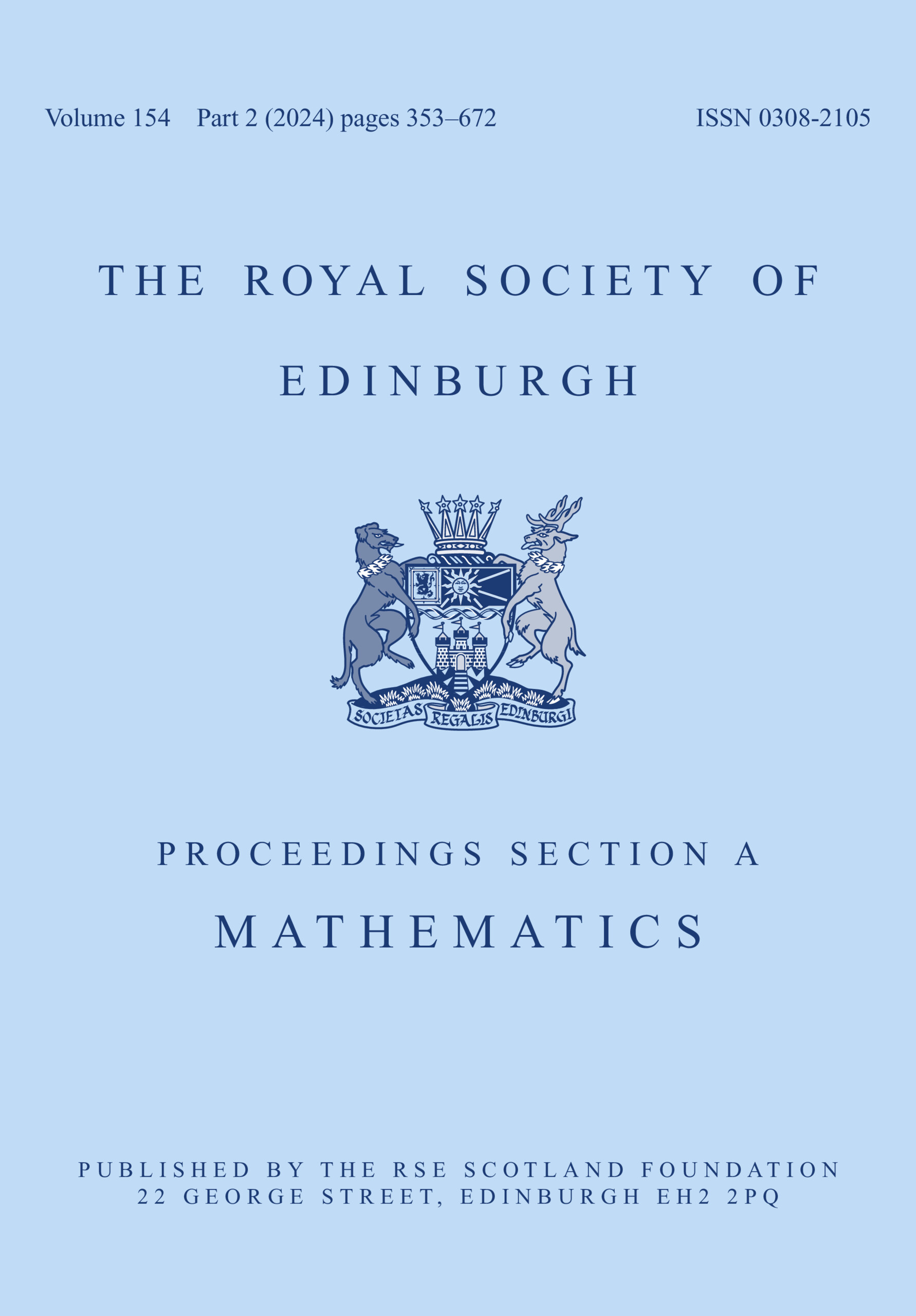Article contents
The number of solutions of the Erdős-Straus Equation and sums of k unit fractions
Published online by Cambridge University Press: 30 January 2019
Abstract
We prove new upper bounds for the number of representations of an arbitrary rational number as a sum of three unit fractions. In particular, for fixed m there are at most  ${\cal O}_{\epsilon }(n^{{3}/{5}+\epsilon })$ solutions of
${\cal O}_{\epsilon }(n^{{3}/{5}+\epsilon })$ solutions of  ${m}/{n} = {1}/{a_1} + {1}/{a_2} + {1}/{a_3}$. This improves upon a result of Browning and Elsholtz (2011) and extends a result of Elsholtz and Tao (2013) who proved this when m=4 and n is a prime. Moreover, there exists an algorithm finding all solutions in expected running time
${m}/{n} = {1}/{a_1} + {1}/{a_2} + {1}/{a_3}$. This improves upon a result of Browning and Elsholtz (2011) and extends a result of Elsholtz and Tao (2013) who proved this when m=4 and n is a prime. Moreover, there exists an algorithm finding all solutions in expected running time  ${\cal O}_{\epsilon }(n^{\epsilon }({n^3}/{m^2})^{{1}/{5}})$, for any
${\cal O}_{\epsilon }(n^{\epsilon }({n^3}/{m^2})^{{1}/{5}})$, for any  $\epsilon \gt 0$. We also improve a bound on the maximum number of representations of a rational number as a sum of k unit fractions. Furthermore, we also improve lower bounds. In particular, we prove that for given
$\epsilon \gt 0$. We also improve a bound on the maximum number of representations of a rational number as a sum of k unit fractions. Furthermore, we also improve lower bounds. In particular, we prove that for given  $m \in {\open N}$ in every reduced residue class e mod f there exist infinitely many primes p such that the number of solutions of the equation
$m \in {\open N}$ in every reduced residue class e mod f there exist infinitely many primes p such that the number of solutions of the equation  ${m}/{p} = {1}/{a_1} + {1}/{a_2} + {1}/{a_3}$ is
${m}/{p} = {1}/{a_1} + {1}/{a_2} + {1}/{a_3}$ is  $\gg _{f,m} \exp (({5\log 2}/({12\,{\rm lcm} (m,f)}) + o_{f,m}(1)) {\log p}/{\log \log p})$. Previously, the best known lower bound of this type was of order
$\gg _{f,m} \exp (({5\log 2}/({12\,{\rm lcm} (m,f)}) + o_{f,m}(1)) {\log p}/{\log \log p})$. Previously, the best known lower bound of this type was of order  $(\log p)^{0.549}$.
$(\log p)^{0.549}$.
MSC classification
Information
- Type
- Research Article
- Information
- Proceedings of the Royal Society of Edinburgh Section A: Mathematics , Volume 150 , Issue 3 , June 2020 , pp. 1401 - 1427
- Copyright
- Copyright © 2019 The Royal Society of Edinburgh
References
 $\sum ^n_{i=1} {1}/{x_i}=1$. Period. Math. Hungar. 47 (2003), 215–219.CrossRefGoogle Scholar
$\sum ^n_{i=1} {1}/{x_i}=1$. Period. Math. Hungar. 47 (2003), 215–219.CrossRefGoogle Scholar- 5
- Cited by

